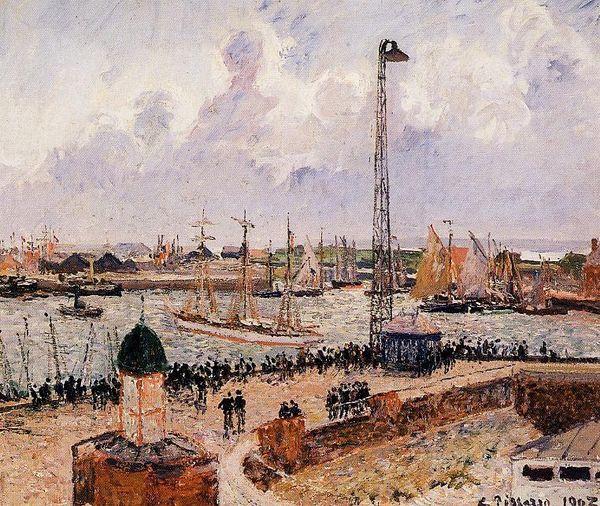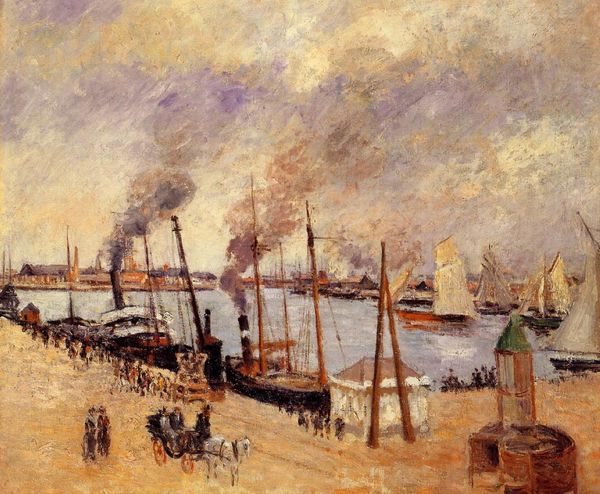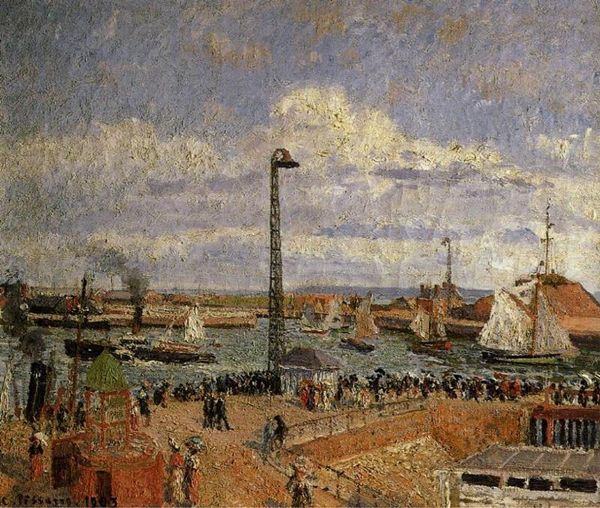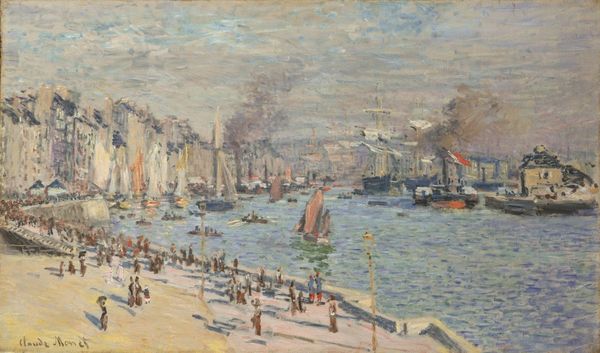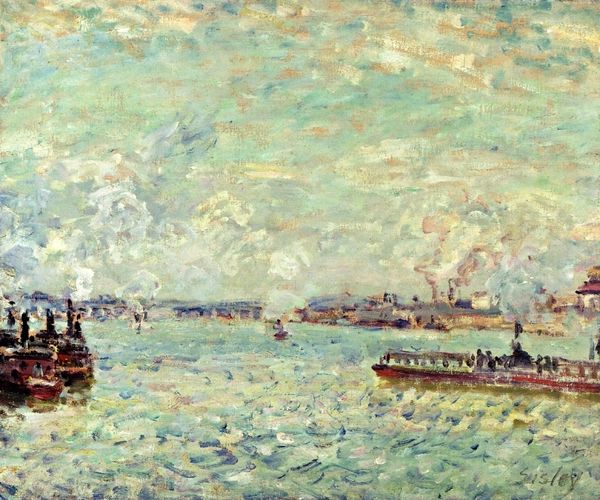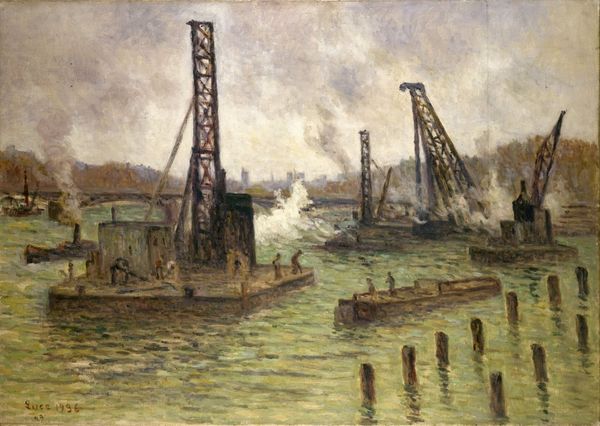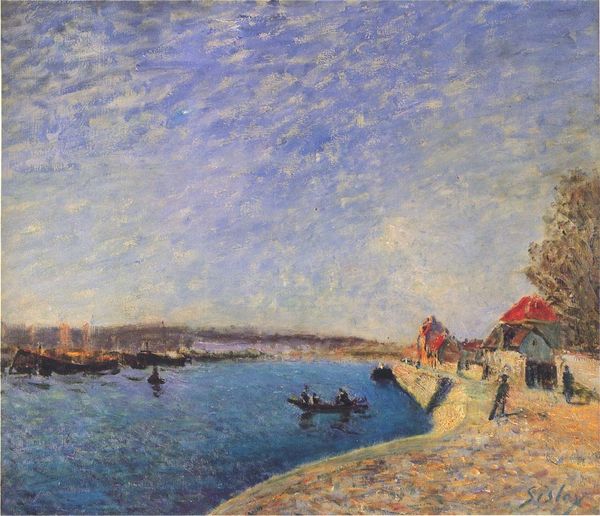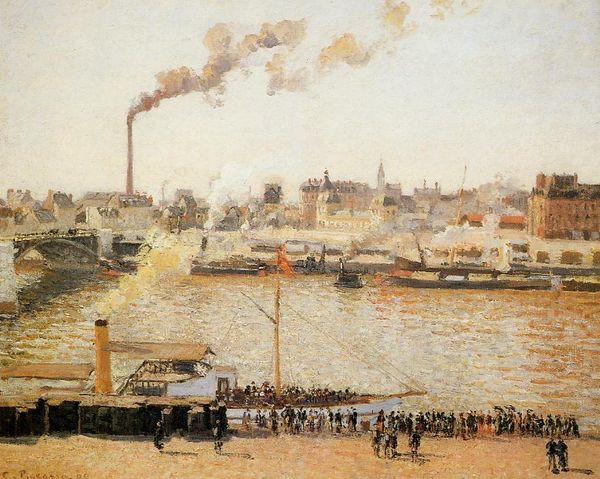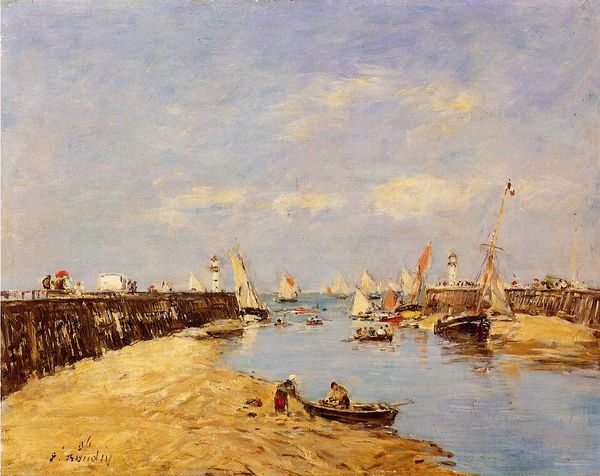
#
boat
#
urban landscape
#
abstract painting
#
ship
#
urban cityscape
#
possibly oil pastel
#
oil painting
#
city scape
#
acrylic on canvas
#
street graffiti
#
painting painterly
#
watercolor
Dimensions: 43 x 52 cm
Copyright: Public domain
Editor: Here we have Camille Pissarro’s “The Inner Port and Pilots Jetty, Havre” from 1903. It looks like an oil painting. The hazy, almost dreamlike quality really grabs me. What can you tell me about it? Curator: Pissarro's late-career focus on port scenes, like this one, tells us much about the period's socio-economic shifts. Havre was a vital port city; such paintings became celebrations of industrial progress but also catered to a rising bourgeois class who had a growing interest in representations of modern life. Why do you think Pissarro chose this particular viewpoint? Editor: Maybe he wanted to show both the bustle of the people on the pier and the activity in the port, the ships coming and going? The people almost seem like ants, hinting at the scale of industry maybe? Curator: Precisely. Consider how paintings like this were displayed, most likely in galleries and private homes within burgeoning urban centers. They functioned as a form of visual capital. Owners showcased these views, connecting them with notions of progress, trade, and the evolving modern landscape. Pissarro’s impressionistic style further softens the harsh realities of industrial labor, rendering it palatable for consumption. Editor: So, it's less a realistic depiction and more a… marketed impression? Did the art world at the time recognize this? Curator: Contemporary critics debated Pissarro's approach, with some praising his modern sensibility and others questioning his detachment from the grittier aspects of port life. The increasing power of art critics shaped not only public taste, but also the artists themselves, affecting what kinds of art got produced and how they were viewed. Editor: I see, so this artwork shows more than just a pretty port; it reveals how art, industry, and society were all entangled at the time. Thanks, that perspective really changes how I view this piece. Curator: Absolutely! By examining the historical and cultural forces at play, we see how seemingly straightforward landscapes are actually complex products of their time.
Comments
No comments
Be the first to comment and join the conversation on the ultimate creative platform.
